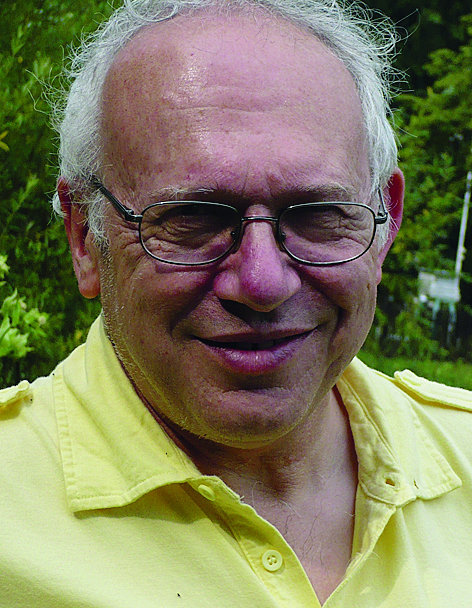When did Shostakovich write his Piano Trio No. 2?
After completing his Eighth Symphony during the height of the Second World War, Shostakovich turned his thoughts towards a Piano Trio. He had already composed one such work early in his career, but it remained unpublished in his lifetime. This new composition, however, which occupied him from December 1943 to August of the following year, turned out to be rather different from his first effort and was conceived on a grander scale.
It’s a work that reflects not only the tragic circumstances of the period in which it was written, but also mourns the loss of the brilliant musicologist Ivan Sollertinsky who died unexpectedly in February 1944 at age of 41. Shostakovich was utterly devastated at the passing of his closest friend and poured out his anguish in a letter to Sollertinsky’s widow: ‘I have no words with which to express the pain that racked my entire being when I received this news… I am totally indebted to him for all my education. It will be unbelievably hard to live without him.’
The composer decided that his new Trio would be dedicated to Sollertinsky’s memory. In this way, he was continuing a tradition of memorial piano trios by Russian composers that began in the late 19th century in works by Tchaikovsky, Arensky and Rachmaninov. Yet Shostakovich’s Trio transcends these earlier models by also confronting the horrors perpetrated by the retreating German army during the last years of the war. In particular, Shostakovich was deeply affected by the stories featured in the Soviet press that SS guards at the death camps of Treblinka and Majdaenk had forced Jewish prisoners to dig their own graves and dance upon them. This discovery gave rise to the macabre musical imagery that haunts the Trio’s Finale.
How would you describe the music of Shostakovich's Piano Trio No. 2?
The Second Piano Trio opens with undoubtedly one of the most strikingly original musical gestures in the entire chamber music repertoire, with the eerie stratospheric sounds of an unaccompanied cello playing a slow grieving melody in harmonics. This lament is subsequently imitated in lower registers by the muted violin and bleak octaves in the piano. It’s a passage eloquently described by the violinist Rostislav Dubinsky as ‘an anxious premonition of misfortune’. A gradual speeding up of tempo merely intensifies the underlying sense of unease with music that moves disconcertingly between moments of anger and defiance and those of desolation and bleakness.
The shift to a major key in the ensuing Scherzo brings no relief. This is a fast, brutally relentless movement punctuated by angry snarls in the strings and disturbing echoes of banal circus music. Shostakovich follows this with a slow passacaglia based on eight stark chords in the piano, an idea likened by Dubinsky to the sound of a hammer on a railway track which tells the prisoners of the concentration camp that ‘one more day in the life of Ivan Denisovich’ has started. As this evil sound reverberates across the hall, the violin and cello weep and pray for the people who perished.
The Finale follows without a break. Over repeated quavers in the piano, a pizzicato violin plays a grotesque Jewish-inflected dance idea whose hypnotic patterns become ever more obsessive as the movement progresses. As the level of dissonance intensifies, Shostakovich turns the screw ever more tightly, building the music up to a furious climax after which he unleashes a torrent of sound that recalls the Passacaglia chords and the first movement’s lament. As the music collapses under the sheer weight of exhaustion, muted violin and cello return with ghostly variations of the Jewish dance theme that eventually disappear into nothingness – a passage described by Dubinsky ‘as if in deathly agony, a wail escapes from a throat strangled by an iron hand.’
When was Shostakovich's Piano Trio No. 2 first played?
Shostakovich unveiled his Second Piano Trio for the first time in November 1944 in Moscow, and played the piano part himself alongside the violinist Dmitri Tsyganov and cellist Sergei Shirinsky. According to eye-witness accounts, the audience was stunned by the power and daring of the work. Dubinsky recalled the performance later in his life: ‘The music left a devastating impression. People cried openly. An embarrassed, nervous Shostakovich repeatedly came onto the stage and bowed awkwardly.’
But the Soviet authorities were far less supportive of this deeply pessimistic work and as a result refused to sanction any further performances. It was therefore no surprise that the Second Piano Trio was added to the swelling list of works that was banned by the regime in 1948 when the composer was denounced by the authorities for allegedly writing music that was deemed to be decadent and formalist.
Words by Erik Levi.
Find out more about Shostakovich and his works here
Read our reviews of the latest Shostakovich recordings here
We named Shostakovich one of the greatest composers ever
